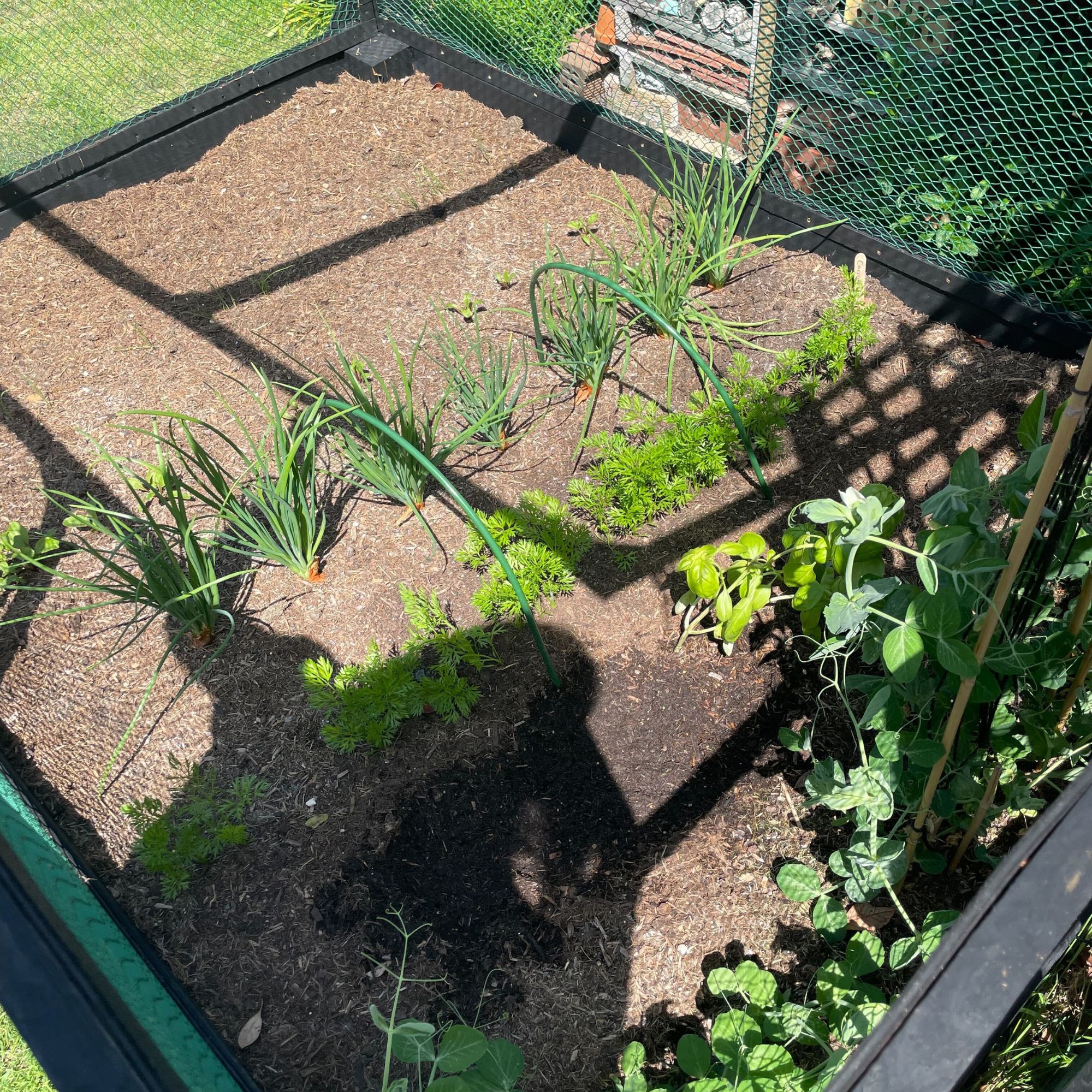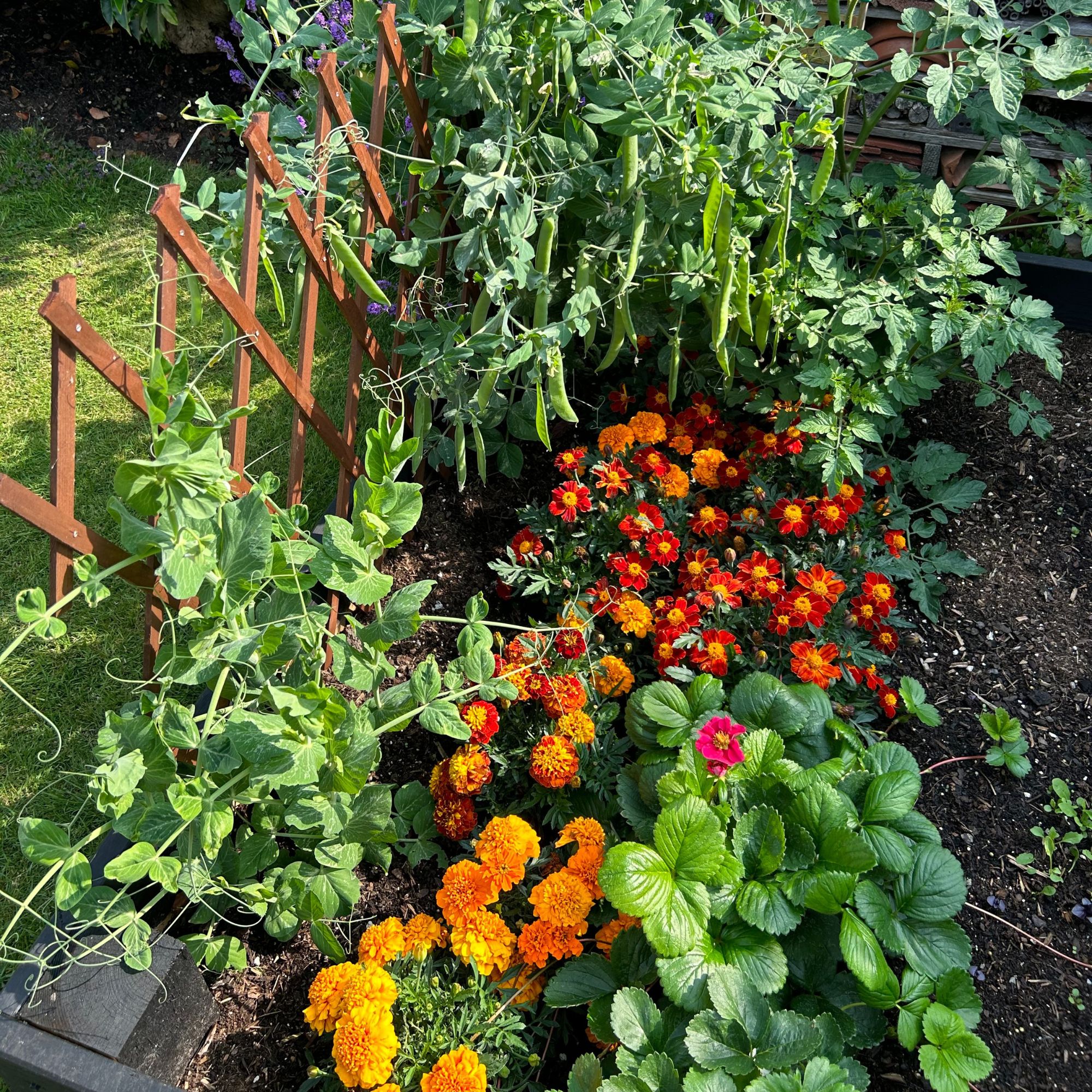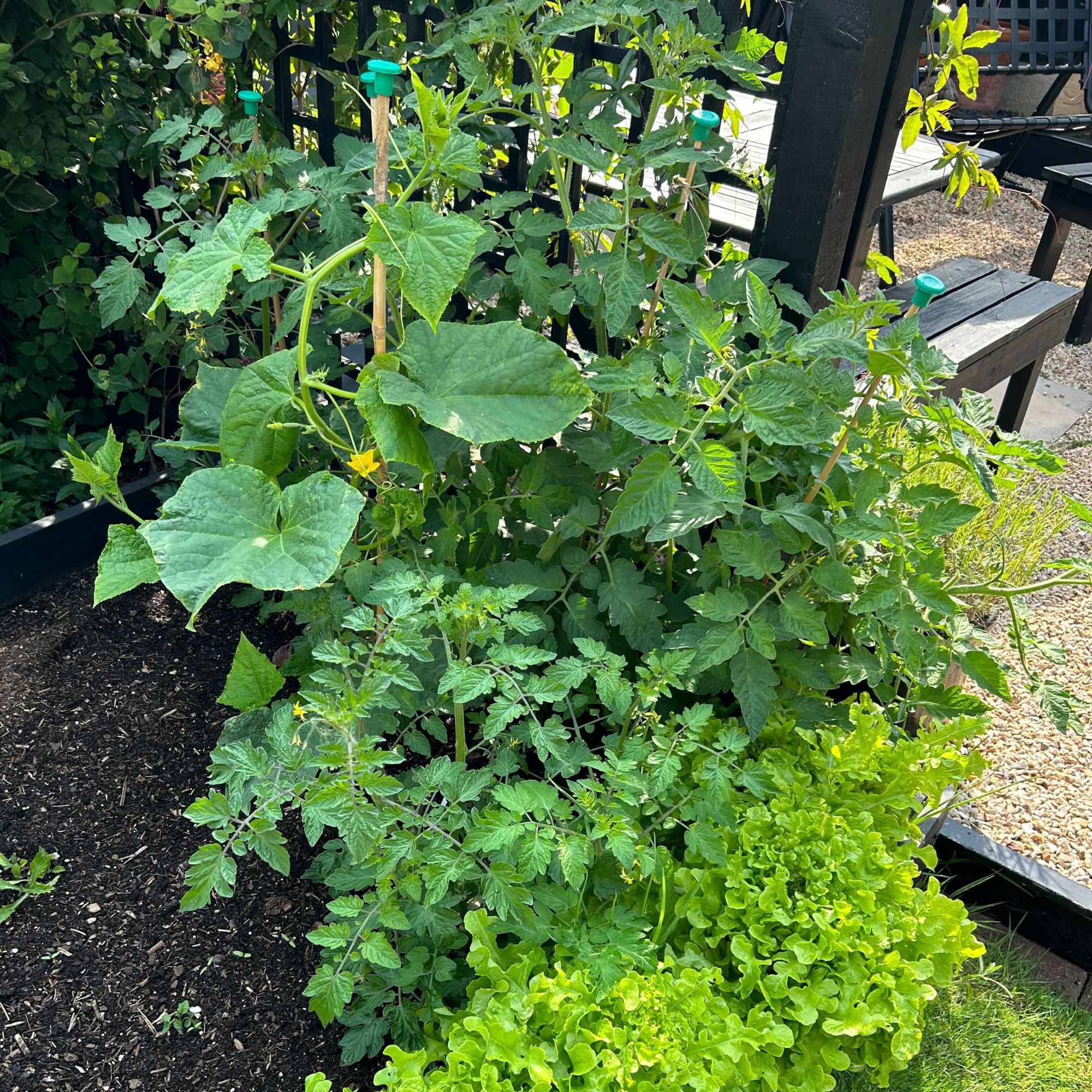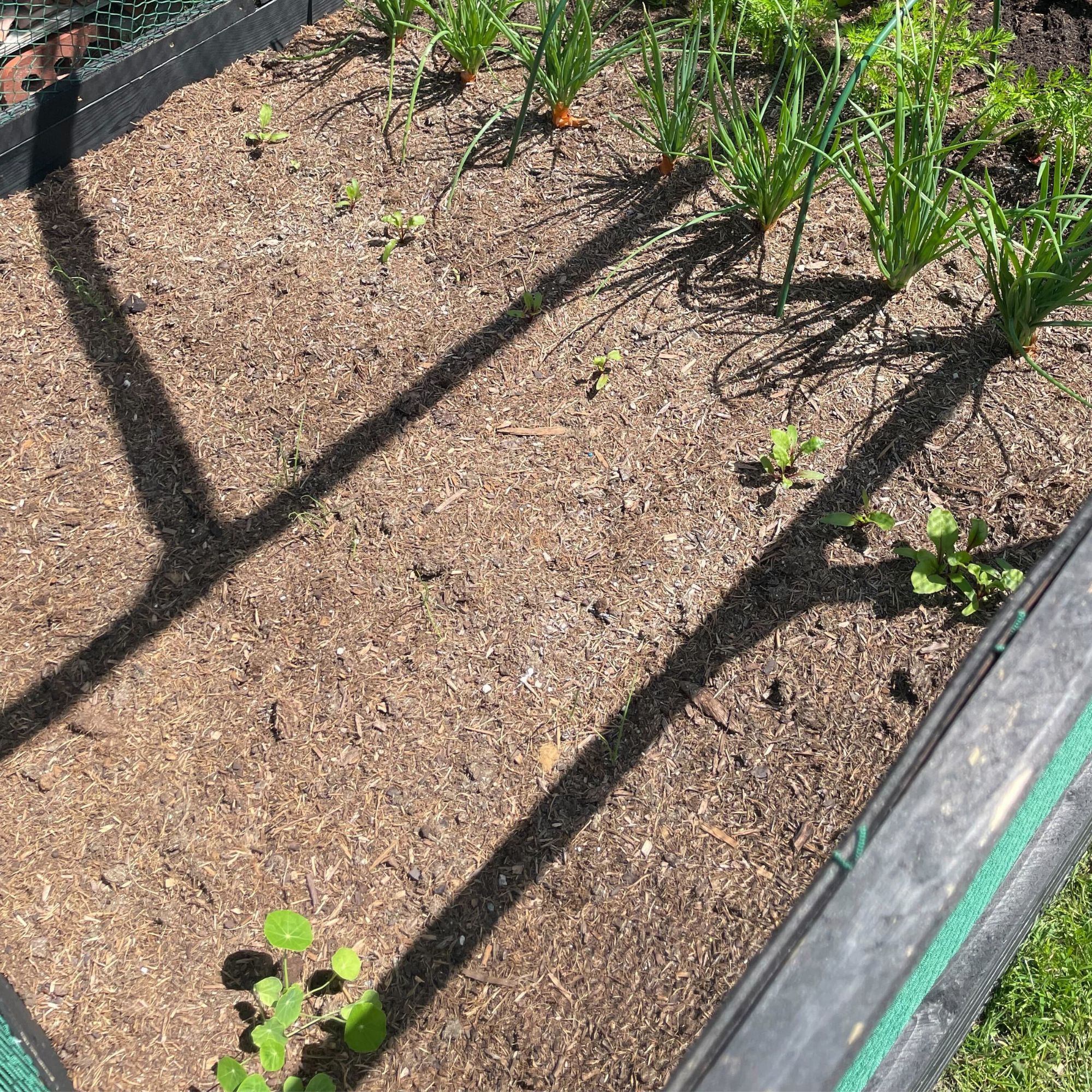
About three years ago, I took the leap from container gardening to a raised vegetable bed. It was exciting, rewarding, and a huge learning curve.
Mostly, it was a huge success – I harvested more vegetables that summer than I thought possible, from beetroot and carrots to shallots and patty pan squash.
There are a few things I wish I’d known before I started my vegetable bed, though, so if you’re hoping to start a small vegetable garden this year, I thought I’d put all of my learnings into one place.
1. The caterpillars – fear them
Now, I hate to be a scaremonger, but of all the garden plant pests out there, caterpillars were the ones that wreaked absolute havoc on my crops when I first started my vegetable bed.
I grew a fair few brassicas, and my radishes were targeted first. My poor romanesco cauliflower didn’t see the light of day – the leaves were eaten away before I could count them.
I don’t mind caterpillars – I find them fascinating, actually. The cabbage whites were a bit of a novelty at first, and I even tried moving them onto my sacrificial nasturtiums by hand so I could watch them grow. But soon, there were more than I had space on my nasturtiums for, and I had to let my vegetables go.

So, what should I have done? Invested in some butterfly-proof netting beforehand. In fact, I did have some horticultural fleece in the shed, but by the time I’d noticed the eggs on the leaves, it was too late.
Ever since, I’ve kept netting in place from the seedling stage, and I haven’t had an infestation like it since (touch wood). My grandad actually made me a brilliant netted cage which I used in my raised bed's second year, with a hatch that I could remove from the top.
2. Companion planting is your best friend

Another brilliant way to crack down on pests? Get acquainted with a few companion planting ideas to keep numbers at bay.
In my vegetable bed’s second year, I planted some marigolds (they’re absolute superheroes) next to my pea plants to attract ladybirds.
Why? Well, ladybirds eat aphids, which were a common sight on my pea plants.
The brilliant thing about a small raised vegetable bed is that you can companion plant close together for the best results. Some plants are pest-repellent, for example, so those are great choices if you’re hoping to deter critters like carrot fly.
3. Drainage is key

When you’re staring at an empty raised bed that’s yet to be filled with soil, it can be tempted to order in bags and bags of compost and fill it straight in.
Drainage is important, though – and it’ll pay dividends if you look at the structure of your raised bed sooner rather than later.
'Plants grow best in a light, open soil structure,' says Rachel Cole, seed manager at Mr Fothergill's. Make sure you incorporate plenty of organic matter (I used Westland's Gro-Sure Farmyard Manure, which you can buy from Amazon), and even consider laying crocks at the bottom of the bed.
4. Depth is important, too

Depth is also important, especially if you’re hoping to grow longer root vegetables like carrots and parsnips. My raised bed was about a foot high, which gave plenty of space for most of my crops, but not all of them.
My mooli radishes grew so long, they rooted themselves in the ground beneath my raised bed. I had to play tug-of-war with my lawn to harvest them.
So, make sure your raised bed is, well, raised enough to accommodate root vegetables.
The brilliant thing about gardening is that you never stop learning, and there's always the chance to try out new tips and tricks. What lessons have you learned so far?







